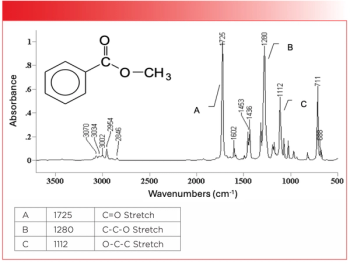
New Breakthrough in Paprika Authentication: FT-NIR Analysis Ensures Quality and Detects Adulteration, Part 1
Food authentication is becoming increasingly important to ensure safety and quality. In the first part of this two part article, the editors of Spectroscopy provide an overview of the paprika industry and a study using Fourier transform near-infrared (FT-NIR) spectroscopy to validate the authenticity of paprika.
According to a recent study out of the University of Murcia, a new approach that combines Fourier transform near-infrared (FT-NIR) spectroscopy with chemometrics can improve detection of food adulteration of paprika, a critical spice in the global economy, according to a recent study from, scientists at the University of Murcia (1).
To understand the significance of the study, it is important to note the importance of paprika in the global economy and why so many nations covet it.
So What is Paprika?
To put it simply, paprika is chile powder (2). It is a spice that originates from sweet and mild chiles (2). Because chiles can differ in flavor and taste depending on where it is grown, there are various types of paprika. Some of these types of paprika include Hungarian paprika, California paprika, sweet smoked Spanish paprika, and hot smoked Spanish paprika (2). The environment and climate can also determine the heat level of paprika. For example, some chile peppers, such as the bell pepper, have little to no heat, whereas the cayenne pepper can be quite hot (2). Whatever pepper is grinded in paprika will determine how spicy the paprika is. Common uses of paprika include on barbecued meats, where the addition of paprika can give more flavor to sauces used for the meat.
How Paprika is Used and How Much is Too Much?
Paprika is normally used to enhance the flavor of food. As a result, it is primarily used in the marinating or seasoning process (3). It is normally recommended that paprika is used sparingly because when too much paprika is used, it can make the taste of the food more bitter (2). However, when used in the right proportion, paprika is meant to give food a more mild and sweet taste (2).
An Inside Look at the Paprika Global Market
Because paprika is a highly valued spice for its color and for its value in enhancing many different culinary options, it is a valued commodity on the global market (1). In 2022, the global paprika market was an estimated $980.2 million (3). By 2030, the market is expected to $1.4 billion by 2030 (3).
So why is the paprika market growing? There are three main driving factors for this shift – an increased demand in natural food colorants, the rise in popularity of ethnic cuisines, and the health benefits the spice offers.
Because paprika has become popular, bad actors have begun to tamper with paprika, leading to unnoticed ingredients being added to the powder that could impact human health. As a result, researchers, such as Dr. Pilar Viñas and the team at the University of Murcia, have looked at using spectroscopic techniques such as FT-NIR to evaluate the authenticity of paprika (1). Their study was published in Food Control (1).
FT-NIR spectroscopy has been used in previous studies to authenticate many other food products, including flour (5–7). What makes FT-NIR spectroscopy valuable in authenticating food is that it can analyze samples without destroying them (5–7). The nondestructive nature of FT-NIR sets it apart from other techniques, and it is a contributing factor why Dr. Viñas and the team used it in their study.
In the next part of our inside look into the paprika industry, refer to part two of this article to learn more about the methodology used in Dr. Viñas’s study will be discussed. It will detail the comprehensive strategy that uses FT-NIR spectroscopy to create a "fingerprint" of paprika samples before using chemometric models based on orthogonal partial least squares-discriminant analysis (OPLS-DA) and partial least squares (PLS) regressions to identify the geographical origin of the paprika, and to detect and quantify adulteration with harmful dyes (1).
References
(1) Castell, A.; Arroyo-Manzanares, N.; Lopez-Garcia, I.; et al. Authentication Strategy for Paprika Analysis According to Geographical Origin and Study of Adulteration Using Near Infrared Spectroscopy and Chemometric Approaches. Food Cont. 2024, 161, 110397. DOI:
(2) Savory Spice, Behind the Seasoning: Paprika – What is it? Uses & Recipes. Savory Spice. Available at:
(3) Yahoo! Finance, Global Paprika Market to Reach $1.4 Billion by 2030. Yahoo.com. Available at:
(4) Market Research, Paprika Market. Market Research.biz. Available at:
(5) Wetzel, W. Fourier Transform Near Infrared Spectroscopy Analyzing the Composition of Cookies. Spectroscopy. Available at:
(6) Quintelas, C.; Rodriguez, C.; Sousa, C.; et al. Cookie Composition Analysis by Fourier Transform Near Infrared Spectroscopy Coupled to Chemometric Analysis. Food Chem. 2024, 435, 137607. DOI:
(7) AZO Materials, Using FT-NIR Spectroscopy for Food Quality. Available at:
Newsletter
Get essential updates on the latest spectroscopy technologies, regulatory standards, and best practices—subscribe today to Spectroscopy.





